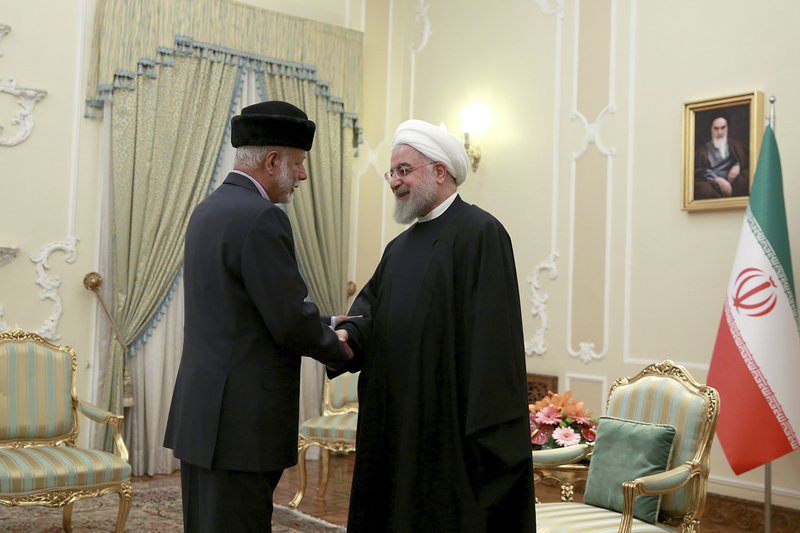DUBAI, United Arab Emirates -- Iran acknowledged for the first time Tuesday that its security forces shot and killed protesters across the country to put down demonstrations last month over the sharply spiking price of gasoline, the deadliest unrest to hit the country since the turmoil of the 1979 Islamic Revolution.
A report by Iranian state television sought to portray those killed as "rioters" or foreign-backed insurgents who threatened military posts, oil tanks and the public. It acknowledged that the violence also killed passers-by, security forces and peaceful protesters without assigning blame.
However, online videos of demonstrations purport to show security forces firing machine guns and rifles at crowds. Amnesty International believes the unrest beginning in mid-November and crackdown that followed killed at least 208 people. An Iranian judiciary official disputed the toll Tuesday as "sheer lies."
The demonstrations show the widespread economic discontent gripping Iran since May 2018, when President Donald Trump imposed crushing sanctions after unilaterally withdrawing the United States from the nuclear deal that Tehran struck with world powers. Trump, speaking to journalists before a NATO summit in London, claimed that Iran has killed "thousands."
The demonstrations followed months of attacks across the Middle East that the U.S. blames on Tehran. Meanwhile, Iran has begun breaking the limits of the nuclear deal in hopes of pressuring Europe into finding a way for Tehran to sell its crude oil abroad despite the American sanctions.
The state TV report alleged that some of those killed were "rioters who have attacked sensitive or military centers with firearms or knives or have taken hostages in some areas." Some sought to access arsenals inside the police and military posts, the report said.
In one case, the report said security forces confronted a separatist group armed with "semi-heavy weapons" in the city of Mahshahr in Iran's southwestern Khuzestan province.
The Arab population of the surrounding oil-rich province has long complained of discrimination by Iran's central government, and insurgent groups have attacked oil pipelines there. Iran blamed both area separatists and the Islamic State group for an attack on a military parade in the region in September 2018 that killed at least 25 people.
Online video purportedly from the area showed peaceful protests, as well as clashes between demonstrators and security forces, although the protesters appeared to be armed largely with rocks and debris.
State TV also acknowledged that security forces confronted "rioters" during the protests in Tehran, as well as in the cities of Shiraz and Sirjan. It also mentioned the Tehran suburb of Shahriar, where Amnesty on Monday said that there had been "dozens of deaths." It described the suburb as likely one of the areas with the highest death toll in the unrest. Shahriar has seen intense protests.
Amnesty offered no breakdown for the deaths elsewhere in the country, although it said "the real figure is likely to be higher."
Judiciary spokesman Gholamhossein Esmaili disputed Amnesty's death toll.
"I bluntly say that numbers and figures given by hostile groups are sheer lies," he told reporters. "Real statistics are seriously different from what they announce, and numbers are far less than what they claim."
He also said the "majority of the detainees" from the protests had been released, without offering any numbers. One lawmaker previously said he thought over 7,000 people had been arrested.
The death toll of at least 208 makes it the bloodiest unrest in Iran since the time of the Islamic Revolution.
The demonstrations began Nov. 15 after the government raised minimum gasoline prices by 50%.
On Tuesday, Trump kept up the pressure, alleging that Iran was "killing perhaps thousands and thousands of people right now as we speak." The protests largely have subsided, and no group has offered estimates that high.
Sitting beside French President Emmanuel Macron later, Trump told journalists that Iran is having "massive riots and protests all over the country."
Asked if the U.S. supported the protesters, Trump said: "I don't want to comment on that, but the answer is no." He later clarified that he meant America offered them no financial support, though it backed their aspirations.
A Section on 12/04/2019

